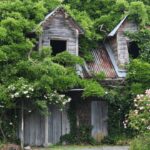Support our educational content for free when you purchase through links on our site. Learn more

Have you ever dreamed of transforming a patch of dirt into a vibrant oasis of fresh produce and community spirit? You’re not alone! Starting a community garden can feel like a Herculean task, but with the right knowledge and support, it can also be one of the most rewarding experiences of your life. Imagine gathering with neighbors, sharing stories, and harvesting the fruits of your labor—literally! But before you grab your trowel and seeds, you might be wondering: Is it really that hard to get started?
In this article, we’ll explore 15 essential tips that will guide you through the process of launching a successful community garden. From finding the perfect location to engaging your community, we’ve got you covered. Did you know that community gardens can increase neighborhood cohesion and reduce food deserts? 🌍 Let’s dig in and discover how you can cultivate not just plants, but also friendships and a sense of belonging!
Key Takeaways
- Community gardens are a powerful way to foster connections among neighbors and improve local food access.
- Planning is crucial: From securing land to gathering a dedicated team, careful preparation can make all the difference.
- Soil health matters: Testing and amending your soil is essential for a thriving garden.
- Engagement is key: Regular events and clear communication keep the community involved and invested.
- Funding options are available: Explore grants and crowdfunding to support your garden initiative.
Ready to get your hands dirty? Check out our recommended gardening tools and supplies to kickstart your community garden journey! Shop Gardening Tools on Amazon | Shop Raised Garden Beds on Amazon
Table of Contents
- Quick Tips and Facts: Is Starting a Community Garden Hard?
- A Deep Dive into Community Gardens: What Are They?
- The Benefits of Community Gardens: Why Grow Together?
- How to Organize Your Community Garden: Step-by-Step Guide
- Finding Your Tribe: Building a Community of Garden Enthusiasts
- Gathering the Troops: Organizing People for Your Garden
- Best Practices for a Thriving Community Garden
- Designing Your Garden: Layouts and Themes
- Choosing the Right Spot: Finding a Site for Your Garden
- Location Matters: Considerations for Your Community Garden
- Landowner Relations: Navigating Permissions and Agreements
- Building Your Garden: From Plan to Planting
- Soil Health: Amending and Preparing the Ground
- Sustaining Your Community Garden: Maintenance and Growth
- Community Engagement: Events and Activities to Boost Involvement
- Funding Your Garden: Grants and Resources
- Conclusion: Is It Worth the Effort?
- Recommended Links: Resources for Community Gardeners
- FAQ: Common Questions About Community Gardens
- Reference Links: Further Reading and Resources
Quick Tips and Facts: Is Starting a Community Garden Hard?
Starting a community garden can be a rewarding experience, but it requires careful planning and effort. Here are some quick tips and facts to consider:
- Soil quality is crucial: Test your soil for contaminants and determine its quality before planting.
- Raised beds can be helpful: They provide better soil conditions and are adaptable to various physical needs.
- Garden design is important: Consider pathways, bed size, and access for efficient gardening and movement.
- Community engagement is key: Form a team of passionate individuals to support the garden and engage with the community.
- Resources are available: Utilize crowdsourcing, grants, and sponsorships to fund your garden.
A Deep Dive into Community Gardens: What Are They?
A community garden is a shared space where individuals can come together to grow their own fruits, vegetables, and flowers. These gardens can be found in urban, suburban, and rural areas and can be used for a variety of purposes, including:
- Food production: Community gardens can provide fresh produce to individuals and families, especially in areas with limited access to grocery stores.
- Community building: Community gardens can serve as a gathering point for the community, bringing together people from different backgrounds and ages.
- Education: Community gardens can be used as a teaching tool, providing opportunities for people to learn about gardening, nutrition, and sustainability.
The Benefits of Community Gardens: Why Grow Together?
Community gardens offer a wide range of benefits, including:
- Fresh produce: Community gardens can provide fresh, healthy produce to individuals and families.
- Community engagement: Community gardens can bring people together, fostering a sense of community and connection.
- Education: Community gardens can be used as a teaching tool, providing opportunities for people to learn about gardening, nutrition, and sustainability.
- Physical activity: Community gardens can provide opportunities for physical activity, such as gardening and maintenance.
How to Organize Your Community Garden: Step-by-Step Guide
Organizing a community garden requires careful planning and effort. Here are the steps to follow:
- Find a location: Look for a vacant lot or space that is suitable for a community garden.
- Form a team: Gather a group of passionate individuals to support the garden.
- Develop a plan: Create a plan for the garden, including its design, budget, and rules.
- Secure funding: Utilize crowdsourcing, grants, and sponsorships to fund the garden.
- Build the garden: Divide the site into plots or beds, and plan for composting and security measures.
Finding Your Tribe: Building a Community of Garden Enthusiasts
Building a community of garden enthusiasts requires effort and dedication. Here are some tips to consider:
- Host events: Host events, such as workshops and potlucks, to bring people together and foster a sense of community.
- Create a social media group: Create a social media group to connect with gardeners and share information.
- Develop a newsletter: Develop a newsletter to keep gardeners informed about upcoming events and garden news.
Gathering the Troops: Organizing People for Your Garden
Organizing people for your garden requires clear communication and defined roles. Here are some tips to consider:
- Create a leadership team: Create a leadership team to oversee the garden and make decisions.
- Define roles: Define roles and responsibilities for gardeners, such as maintenance and watering schedules.
- Establish rules: Establish rules for the garden, including rules for plot usage and maintenance.
Best Practices for a Thriving Community Garden
Here are some best practices to consider for a thriving community garden:
- Soil health: Prioritize soil health by using compost and organic gardening practices.
- Water conservation: Implement water conservation measures, such as rain barrels and drip irrigation.
- Maintenance: Establish a maintenance schedule to keep the garden looking its best.
Designing Your Garden: Layouts and Themes
Designing your garden requires careful consideration of its layout and theme. Here are some tips to consider:
- Consider the climate: Choose plants that are suitable for your area’s climate.
- Choose a theme: Decide on a theme for your garden, such as a vegetable garden or a pollinator garden.
- Create a layout: Design a layout for your garden, including pathways and beds.
Choosing the Right Spot: Finding a Site for Your Garden
Finding the right spot for your garden requires careful consideration of several factors. Here are some tips to consider:
- Sunlight: Choose a spot that receives at least six hours of direct sunlight per day.
- Soil: Opt for a location with good soil quality or consider raised beds.
- Water access: Select a site with easy access to water.
Location Matters: Considerations for Your Community Garden
The location of your community garden is crucial for its success. Here are some considerations to keep in mind:
- Accessibility: Choose a location that is easily accessible for gardeners.
- Visibility: Select a spot that is visible to the community.
- Safety: Ensure the location is safe for all gardeners.
Landowner Relations: Navigating Permissions and Agreements
Navigating permissions and agreements with landowners requires clear communication and negotiation. Here are some tips to consider:
- Develop a contract: Create a contract that outlines the terms of the agreement.
- Establish clear expectations: Set clear expectations for the garden’s maintenance and usage.
- Build a relationship: Foster a positive relationship with the landowner to ensure a successful partnership.
Building Your Garden: From Plan to Planting
Building your garden requires careful planning and execution. Here are the steps to follow:
- Prepare the site: Clear debris and test the soil.
- Build the beds: Construct the beds or plots for the garden.
- Plant the garden: Plant a variety of fruits, vegetables, and flowers.
Soil Health: Amending and Preparing the Ground
Soil health is crucial for a thriving community garden. Here are some tips to consider:
- Test the soil: Determine the pH level and nutrient content of your soil.
- Amend the soil: Use compost and organic matter to improve soil quality.
- Use cover crops: Incorporate cover crops to enhance soil health and prevent erosion.
Sustaining Your Community Garden: Maintenance and Growth
Sustaining your community garden requires ongoing maintenance and growth. Here are some tips to consider:
- Establish a maintenance schedule: Regularly maintain the garden to keep it looking its best.
- Monitor the garden: Keep an eye out for pests and diseases.
- Add new features: Consider adding new elements to the garden, such as a greenhouse or rain barrel.
Community Engagement: Events and Activities to Boost Involvement
Community engagement is crucial for a thriving community garden. Here are some events and activities to consider:
- Host workshops: Plan workshops on gardening, nutrition, and sustainability.
- Create a social media group: Use social media to connect with gardeners and share information.
- Host potlucks: Organize potlucks to bring people together and foster community spirit.
Funding Your Garden: Grants and Resources
Funding your garden requires careful planning and research. Here are some grants and resources to consider:
- Grants: Apply for grants from local and national organizations.
- Crowdsourcing: Utilize crowdsourcing platforms to raise funds for the garden.
- Sponsorships: Seek sponsorships from local businesses and organizations.
Recommended Links: Resources for Community Gardeners
- American Community Gardening Association: https://www.communitygarden.org/
- National Gardening Association: https://www.garden.org/onlinecourse/PartI5.htm
- Local Harvest: https://www.localharvest.org/
FAQ: Common Questions About Community Gardens
-
Q: What is a community garden?
A: A community garden is a shared space where individuals can come together to grow their own fruits, vegetables, and flowers. -
Q: How do I start a community garden?
A: Start by finding a location, forming a team, and developing a plan. -
Q: What are the benefits of a community garden?
A: Community gardens offer a wide range of benefits, including fresh produce, community engagement, education, and physical activity.
Reference Links: Further Reading and Resources
- Starting a Community Garden: A Guide: https://www.soils.org/about-soils/community-gardens
- 7 Effective Steps to Start a Community Garden: https://ccaps.umn.edu/story/7-effective-steps-start-community-garden
- Community Garden Handbook: https://www.communitygarden.org/resources/community-garden-handbook
Conclusion: Is It Worth the Effort? 🌱

So, is starting a community garden hard? Well, it can be a bit challenging, but the rewards often outweigh the difficulties! With proper planning, community involvement, and a sprinkle of patience, you can cultivate not just plants, but also friendships and a sense of belonging in your neighborhood.
Summary of Positives and Negatives
Positives:
- Fresh Produce: Enjoy access to healthy, homegrown fruits and vegetables.
- Community Building: Forge connections and camaraderie with fellow gardeners.
- Educational Opportunities: Learn about sustainable practices and gardening techniques.
- Physical Activity: Get active while tending to your garden space.
Negatives:
- Time Commitment: Regular maintenance is essential for success.
- Initial Costs: Setting up a garden can involve expenses for soil, seeds, and tools.
- Landowner Relations: Navigating permissions can be tricky, depending on the land.
In summary, if you’re ready to roll up your sleeves and dig in, a community garden can be an incredibly fulfilling endeavor! 🌼 So grab your trowel, gather your neighbors, and let’s get growing!
Recommended Links: Shop for Your Community Garden Needs
- Gardening Tools: Shop Gardening Tools on Amazon
- Raised Garden Beds: Shop Raised Garden Beds on Amazon
- Gardening Books: Shop Gardening Books on Amazon
FAQ: Common Questions About Community Gardens

How do I start a local community garden? 🌍
Starting a local community garden involves several key steps:
- Gather a Group: Form a team of interested individuals.
- Find a Suitable Location: Look for vacant lots or community spaces.
- Secure Permissions: Obtain necessary approvals from landowners or local authorities.
- Create a Plan: Develop a garden layout, budget, and rules for participants.
- Build the Garden: Prepare the site, plant, and maintain the garden together.
Is a community garden profitable? 💰
While community gardens are generally not profit-driven, they can provide economic benefits. They may reduce grocery bills for participants and can lead to the sale of excess produce at local markets. Additionally, some gardens may secure grants or sponsorships, which can help sustain operations without the need for profit.
How long does it take to create a community garden? ⏳
The timeline for creating a community garden can vary widely. From initial planning to planting, it can take anywhere from a few months to over a year. Factors influencing this timeline include securing land, gathering community support, and preparing the site.
Read more about “Discover 7 Surprising Benefits of Gardening You Never Knew About! 🌱 …”
What are the disadvantages of a community garden? ⚠️
Some disadvantages of community gardens include:
- Time and Labor: Regular maintenance can be demanding, requiring commitment from all members.
- Conflict Resolution: Disagreements may arise among gardeners regarding rules, responsibilities, or garden layout.
- Dependency on Community: The success of the garden often relies on consistent participation and support from the community.
What plants are best for community gardens? 🌿
When choosing plants for a community garden, consider:
- Local Climate: Select plants that thrive in your specific climate.
- Ease of Growth: Opt for plants that are easy to care for, such as tomatoes, peppers, and herbs.
- Community Preferences: Engage members in choosing plants that they would like to grow and consume.
How can I engage the community in my garden? 🤝
Engaging the community can be achieved through:
- Hosting Events: Plan workshops, potlucks, or harvest festivals to bring people together.
- Social Media: Create online groups to share updates and foster communication.
- Volunteer Days: Organize regular volunteer days for maintenance and planting, allowing everyone to contribute.
Reference Links: Further Reading and Resources
- American Community Gardening Association: https://www.communitygarden.org/
- National Gardening Association: https://www.garden.org/onlinecourse/PartI5.htm
- How to Start a Community Garden | UMN CCAPS: https://ccaps.umn.edu/story/7-effective-steps-start-community-garden
- Soil Health and Contaminants: https://www.soils.org/about-soils/soil-contaminants
- Gardening for Beginners: https://www.community-gardening.org/category/gardening-for-beginners/

